Zest in Zambia
How many countries in the world start with Z? As it happens, only two – Zambia and Zimbabwe – and they coincidentally border each other in southern Africa (if you’re also thinking Zaire you’re out of date, they changed their name years ago). Our entry into Zambia was a little painful, expensive visas, expensive vehicle registration, insurance, road tax and council tax, all payable at the border to different indifferent collectors. But we persevered and popped out the other side keen to explore a new country.
Zambia started its colonial time as Northern Rhodesia but became independent in the 1960’s under its new name, only to suffer a similar fate to other emerging African nations – political instability, twisted ideology, corruption, poor economic activity, and general malaise. The country still suffers from some of these issues but also has some fabulous attractions for intrepid visitors. We drove across lush green hills, through small quiet villages and past a steady stream of bicyclists on the long open roads to arrive at South Luangwa National Park.
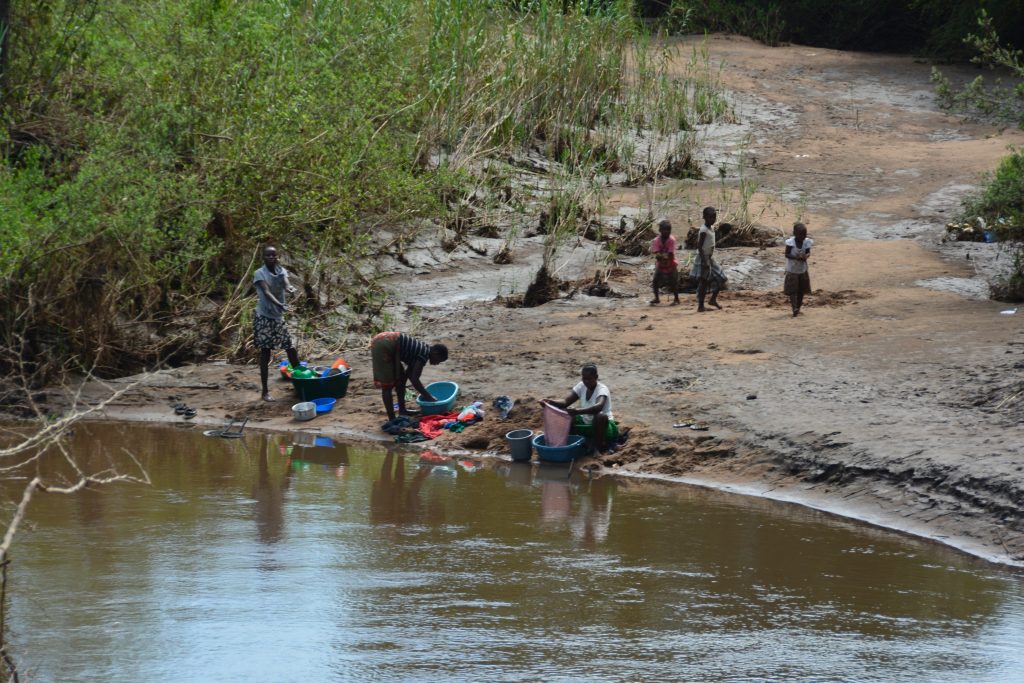
Its washing day despite the muddy river – fresh water is scarce in villages and this scene was very common
Set on the huge Luangwa River, this national park is a Big 5 destination and probably the country’s premier game viewing park. Unfortunately we were catching the tail end of their rainy season and the roads to the park were muddy and sloshy…we had a couple of sideways moments. We camped at Wildlife Camp with Tramp nudged up to the edge of the high banks of the river, surrounded by wildlife.
That evening and the next morning we were visited by an amazing array of Africa’s best – four elephants, herds of impala, annoying troops of baboons who would steal breakfast from your hands if you turned your head, banned mongoose, crocodiles reclining on the muddy banks below, a herd of puku (a handsome antelope), and a beautiful large spotted genet which is a cat-like carnivore.
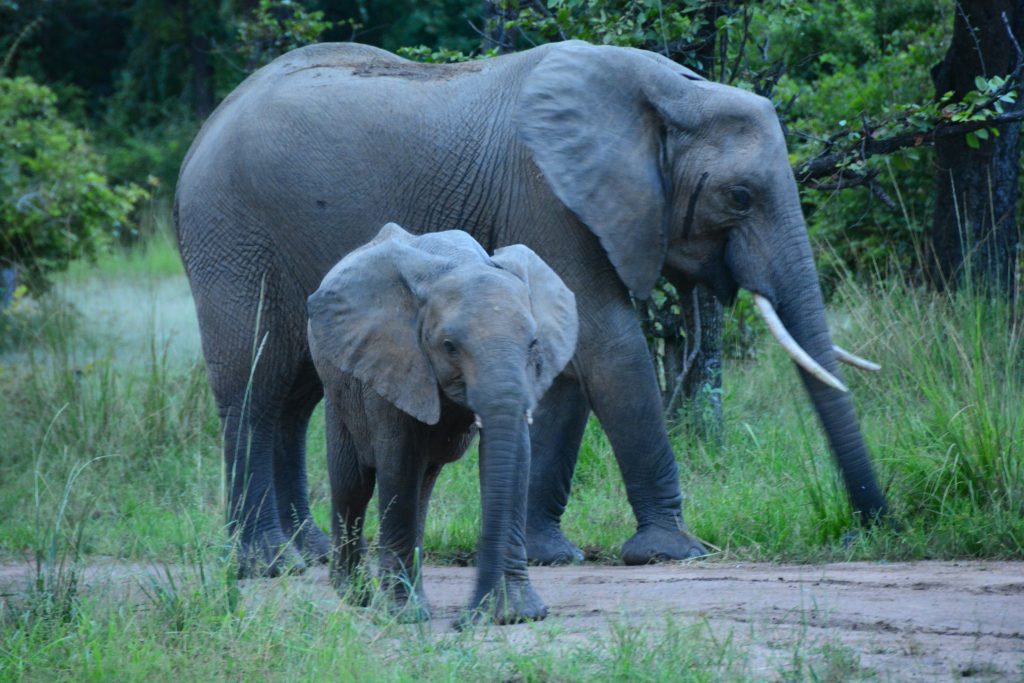
The national parks in Zambia are unfenced which means all animals, including the imposing elephants, can come into camp if they want to – and sometimes they want to!
But the star of the show were the hippos, up and downstream of us, emerging from their comfy river hiding, calling out with their huge deep-throated pig grunting noise, their singing carrying across the slow-moving muddy waters of the Luangwa River. This was Africa at its very finest, an extraordinary experience.
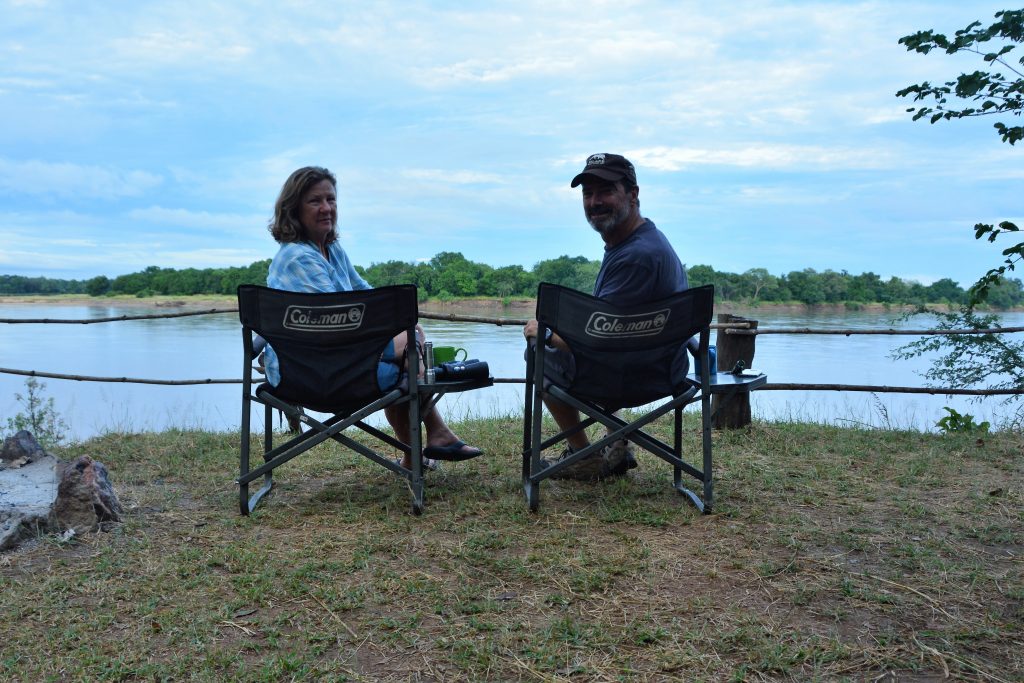
Cocktail hour has never been better than to look over the Luangwa River and listen to the hippos down below us
So delightful was the setting we decided to stay an extra day, joined by a group of seven Irish travellers that we had initially met camping on Lake Malawi and had bumped into again at this campsite. Julie and I did some washing and chores and that afternoon despite the 41C/106F suffocating heat decided to do a game drive in the national park.
We were immediately rewarded by seeing a pack of 14 African Wild Dogs, as rare as cheetahs, hiding from the scorching sun in the shade of a tree. This was a real treat, very special, and we watched these odd looking dogs with their camouflage coats and over-sized pointy ears for a long time.
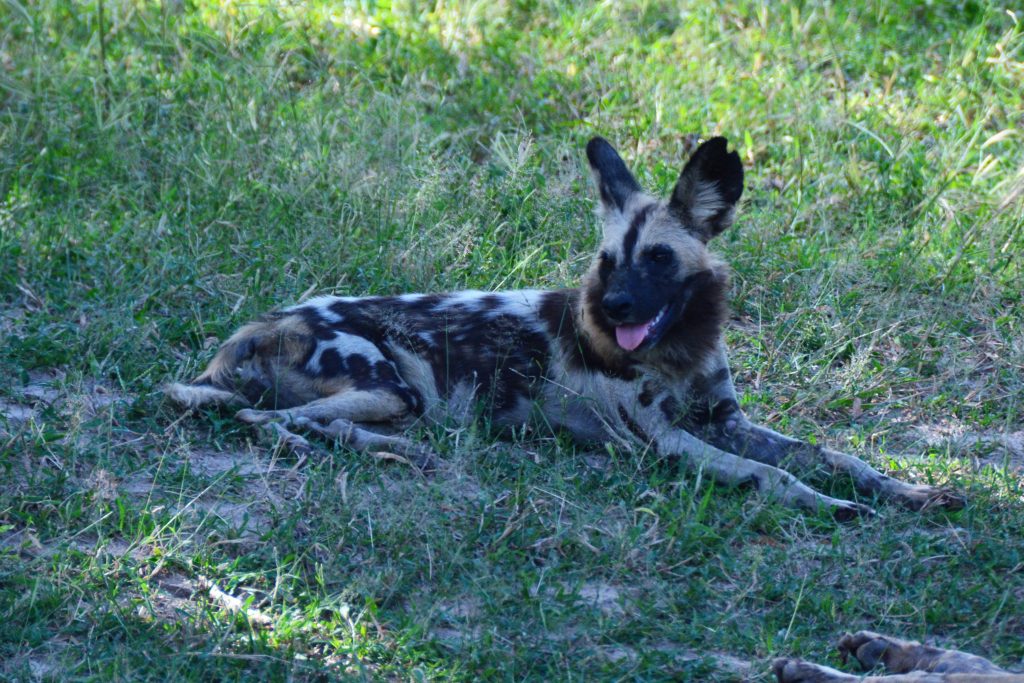
These wild dogs with their unique camouflage colouring and big ears are extremely rare – this is small game hunting at its best
We saw many other animals as we drove through the park but as seasoned animal hunters we were looking primarily for lions and leopards. Unfortunately the storm clouds moved in, thunder and lightning started a dramatic sound and light show all around us, then the rain. It became quite dark, visibility dropped to zero and the roads became very muddy so we turned back and headed for home and shelter from the storm.
The next morning another splendid dawn broke on the Luangwa River again, this time in our muddy campsite, baboons, hippos and crocodiles our constant friends, but we reluctantly packed up and headed south. We had a rough plan to get to the Zimbabwe border, about a two day drive, and we steered Tramp down the Great East Road towards the country’s capital, Lusaka.
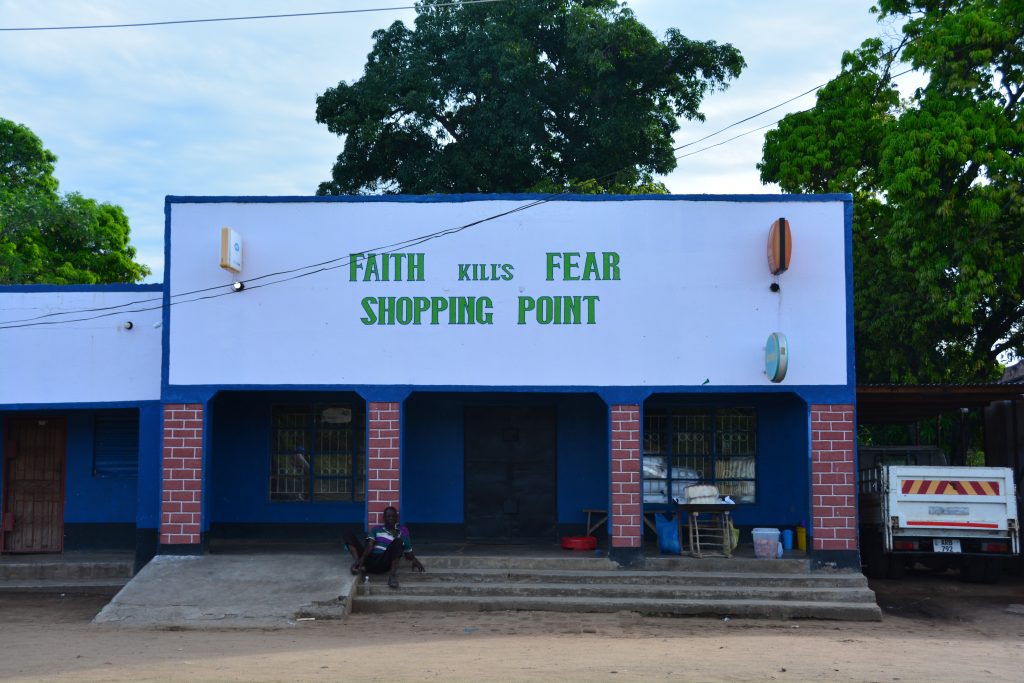
People in Zambia are extremely religious and obviously believe the good fortune of their business is linked to their name – we saw many humorous religious-themed names
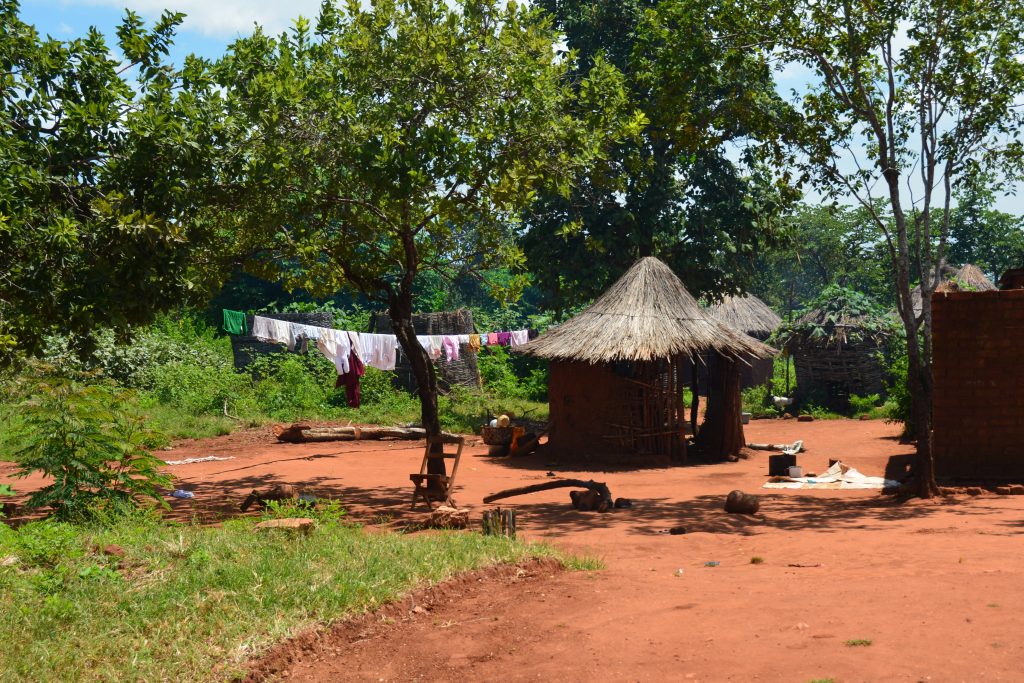
Zambia family communities usually consisted of a round building for cooking and communal activity and then some rectangular buildings for sleeping
The Great East Road was probably the best road we’ve been on since South Africa. In perfect condition, a nice shoulder, absolutely no traffic, driver’s heaven. But it was the countryside that entertained us, lush green rolling hills, maize, tobacco and banana grown here and there, the land plentiful when called upon.

Roadside stalls are a regular source of food, as in this case Julie didn’t even get out of the car – they brought the goods to her, she chose and then paid
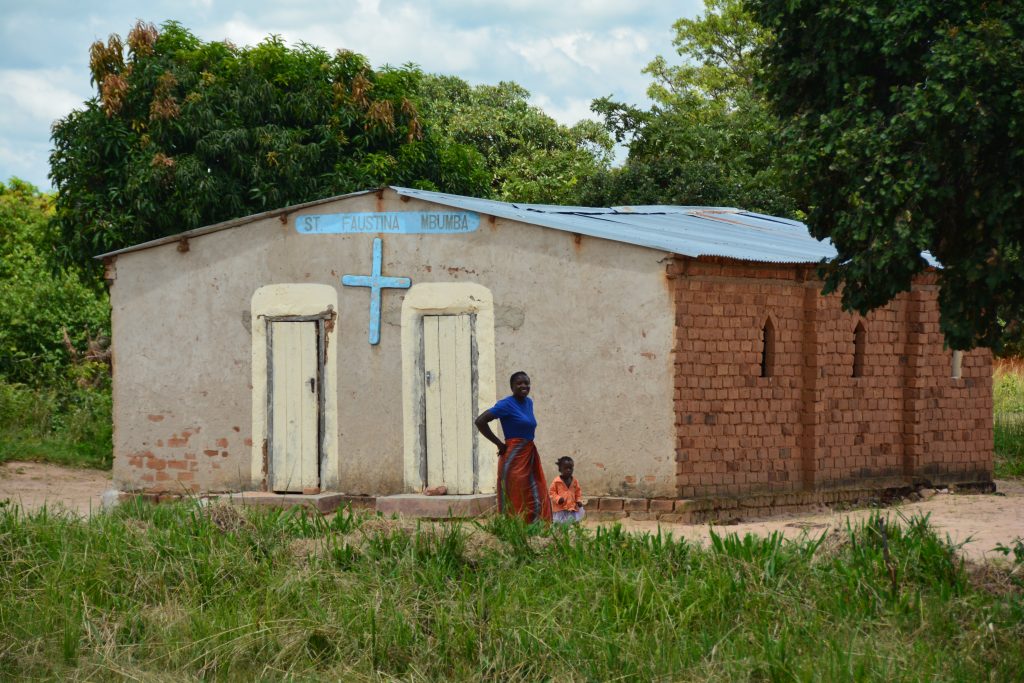
Many villages have modest churches like this one, not all of them looking completed or frequently used
The villages were similar to those we had seen elsewhere, usually featuring a hand-pump water well, clusters of buildings with one or two small circular buildings for cooking or storage, washing out, kids playing, simple brick buildings with thatch roofs. Despite being on the nation’s main roads these villages lacked electricity but many had schools.
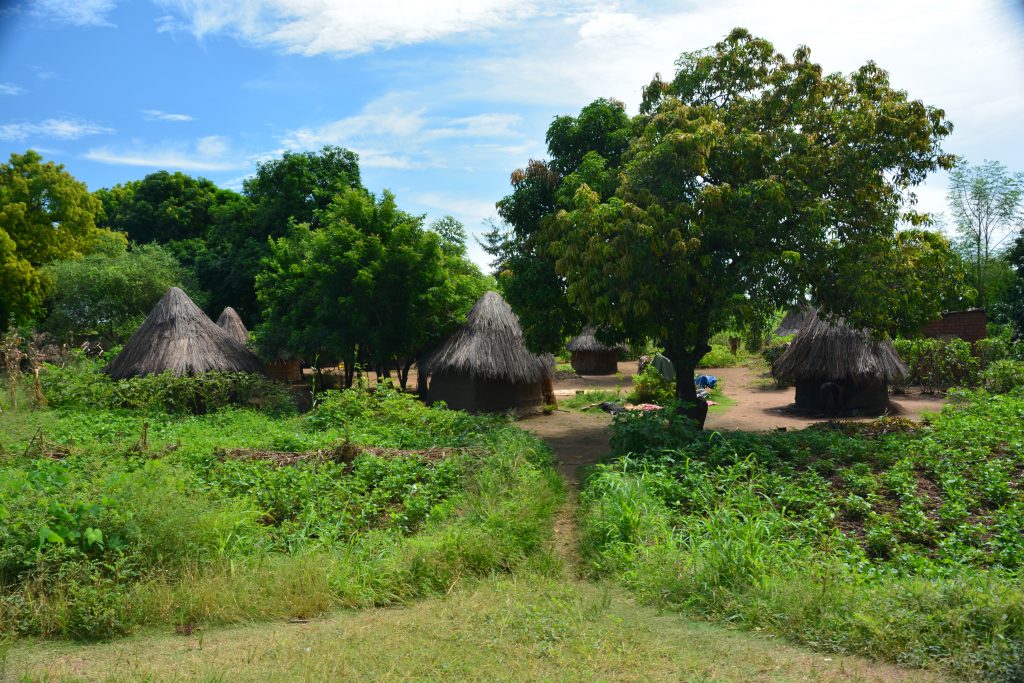
One of the most common scenes in Africa – a neatly kept cluster of modest homes surrounded by crops if the land allowed it
In the town of Petauke we pulled up at an ‘executive lodge’ which provided excellent camping facilities behind their bungalow accommodation. Still coincidentally travelling with our new Irish friends, we had a relaxing evening amongst pleasant surroundings, albeit without hippos or the soothing scene of a wide brown river slowly passing by.
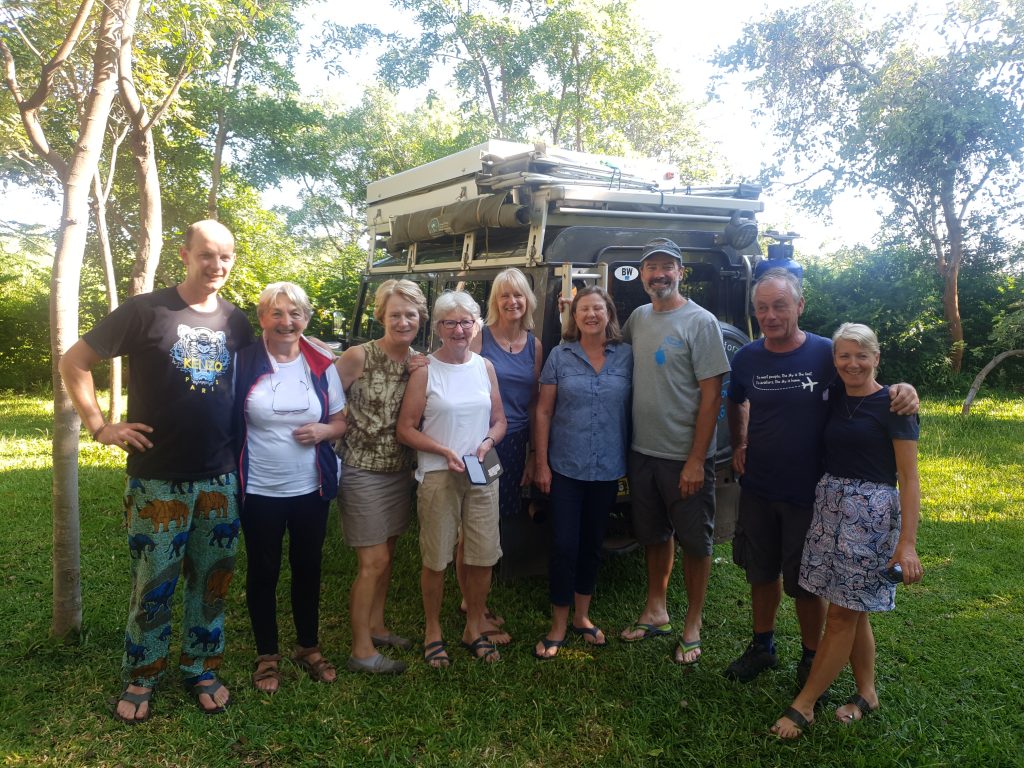
Mel, second from right, and this Irish group, many from the same small village in Ireland, were our travelling buddies for a few nights in Malawi and Zambia
With a young Austrian couple we met at this campsite we conjured up a plan to take a ‘short cut’ from the Great East Road up and over what is called Leopard Hill and drop down to the Zambezi River to the south. This was reported to be a difficult but spectacular four-wheel drive track but with Marco and Eve in their Toyota Landcruiser we agreed to take it on together.
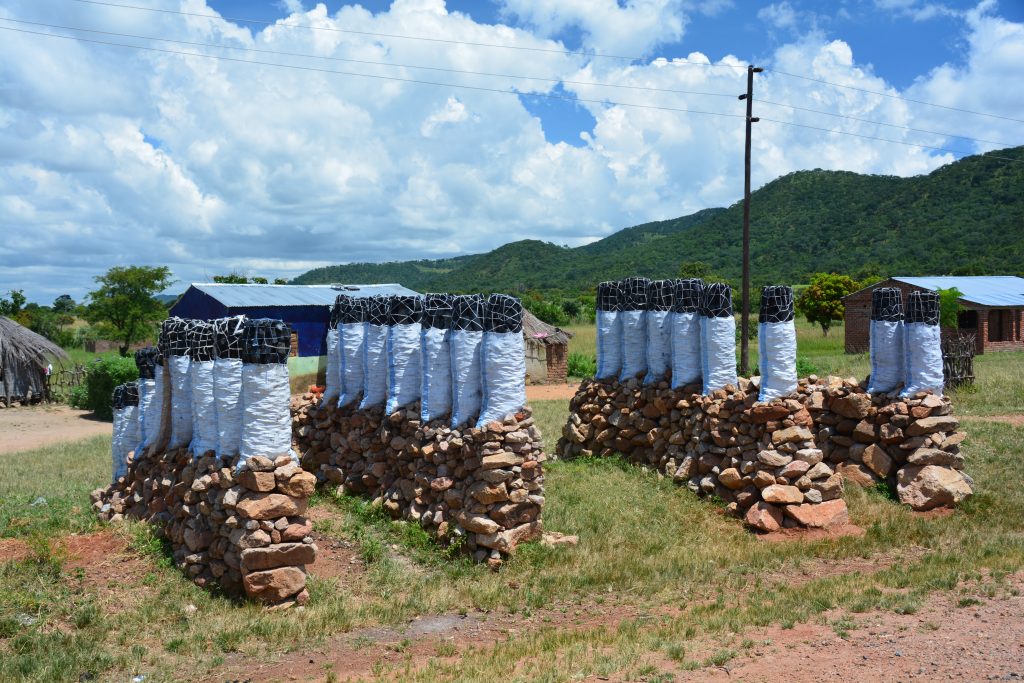
Charcoal is always a feature on the sides of the road but this one turned the bags into handsome monuments
The morning started with me allegedly getting caught in a Zambian speed camera. We were pulled over, told we had exceeded the speed limit and had to pay a fine. I disputed this, of course, put up a robust but polite defence and insisted on seeing the photo in the camera. After some time of the officer playing with the camera he looked up at me and said with a dismissive wave, “You may proceed”. Another failed attempt to touch up a tourist.
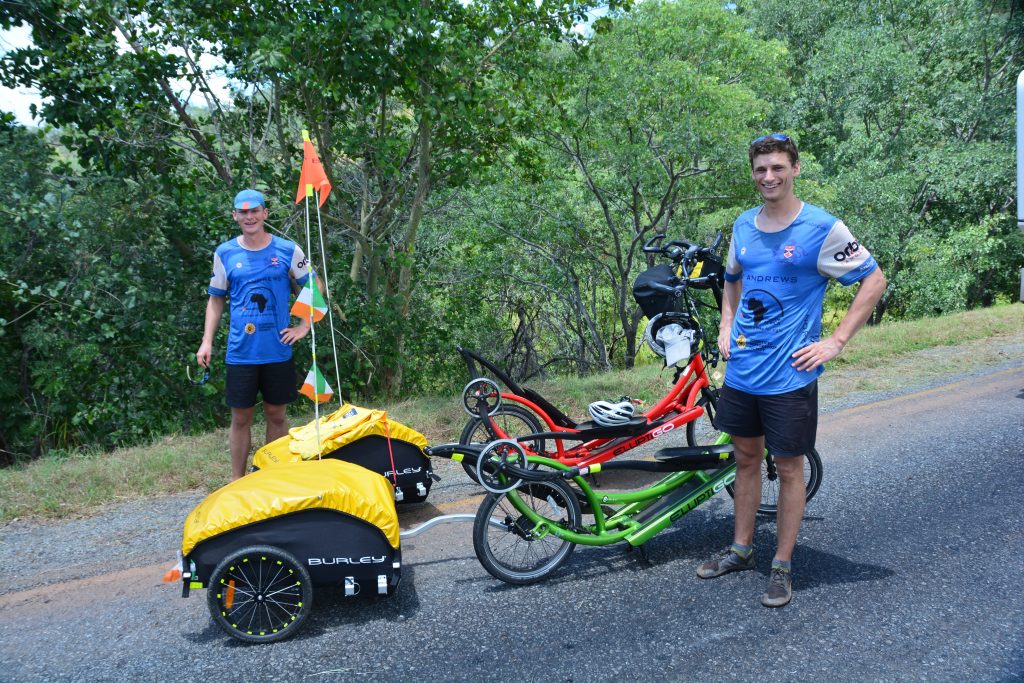
These two Irish guys – everyone was Irish this week – were amazingly cycling in these special stand-up bicycles from Cairo to Cape Town…what an extraordinary pair of lads!
The D151, as it is officially called on the maps, starts off as a bumpy dirt track through a few forlorn villages before rising to the landmark mountain of Leopard Hill. From there the track weaves its way up and into the Tarzan-like jungle mountains, thorn trees and other bushes scraping Tramp’s sides, the track in poor condition, many steep and washed out areas.
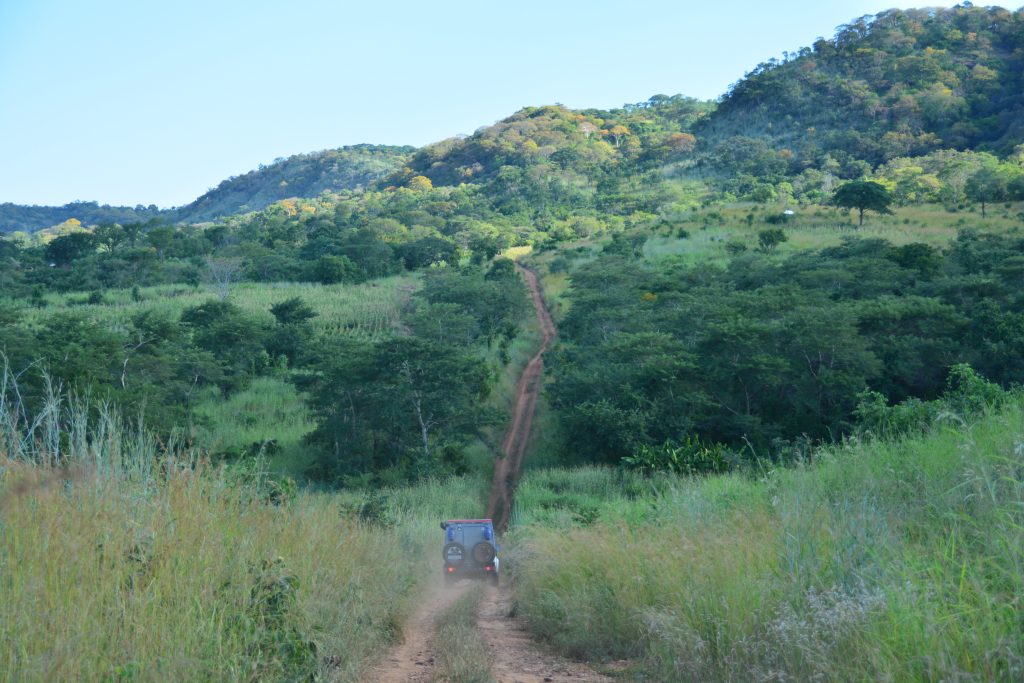
The off-road drive to Leopard Hill started off as a narrow track through lush green but steep hillsides – see Marco and Eve’s Landcruiser ahead of us
We stopped many times to plot our course across the difficult sections and carefully helped each other navigate the steep or awkward slopes. Tramp performed brilliantly, especially given he is seven metres long and weighs four tonnes. The mountain views were stunning but most of our focus was on the road and ensuring we minimised the scratches and scrapes while safely passing through each difficult section.
We camped that night on a mountain ridge, built a fire for our braai, shared a celebratory bottle of champagne that Eve pulled out and enjoyed the full moon high above us. All four of us were in our element, loving the special moment.
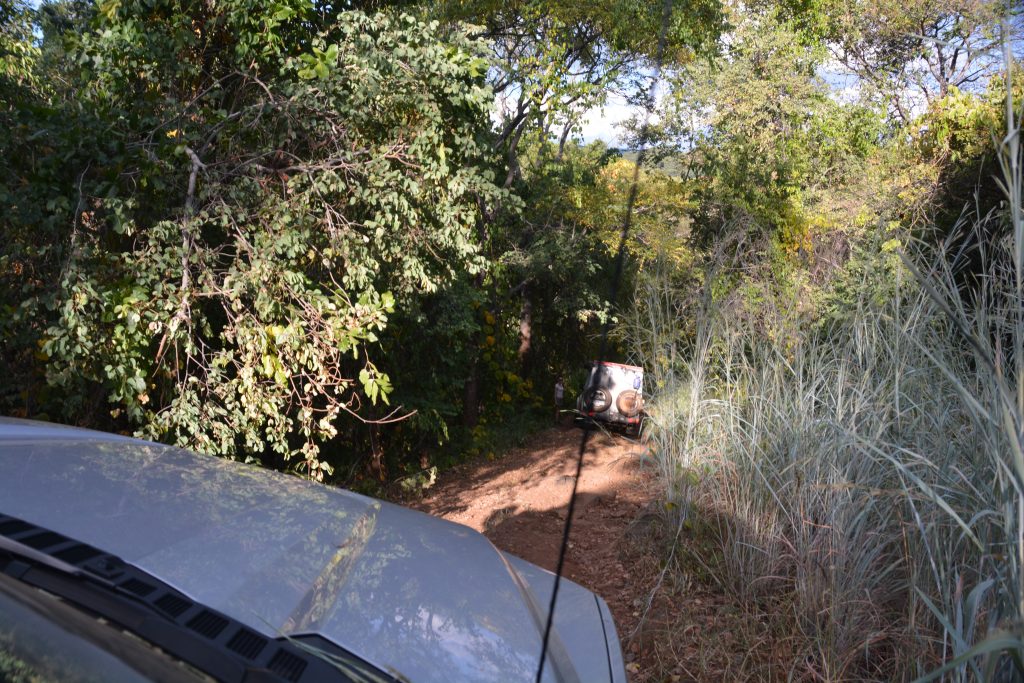
Many of the sections were tight, awkwardly tilted or with low hanging trees that scraped our precious solar panels
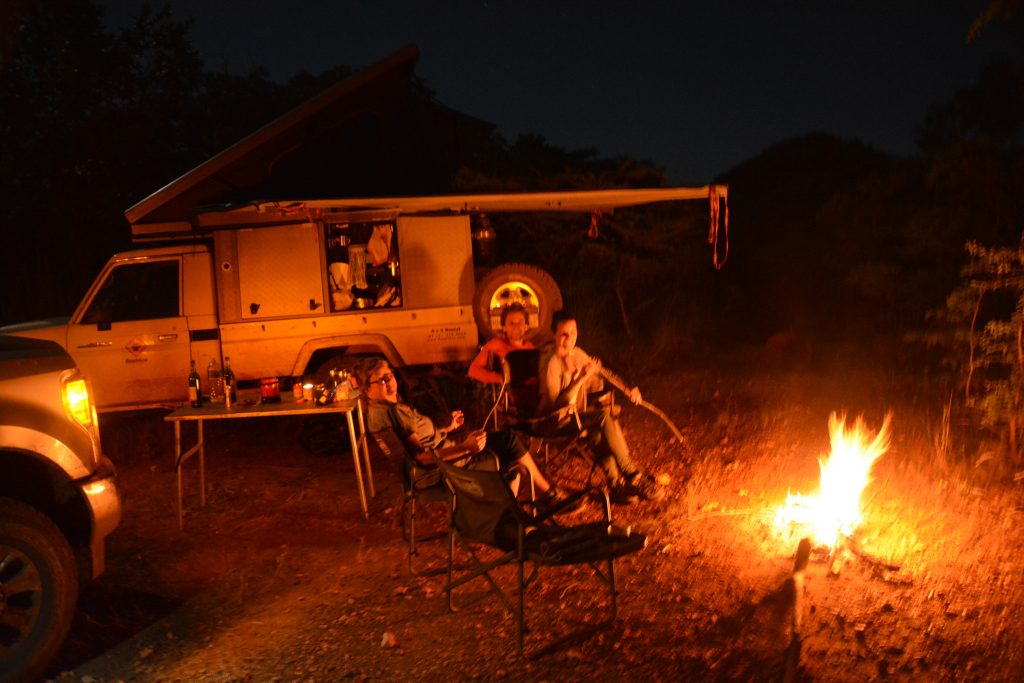
Marco, Eve, Julie and I camped that night in the middle of the road and enjoyed a fabulous night under the stars with champagne and great company
The next day I had to replace the ratchet strap that holds together our camper tray as the Leopard Hill track had worn through and snapped the old strap. With Marco’s help we made short work of it and then followed the steep track down down down through a number of difficult technical sections until we were off the mountain. We had conquered Leopard Hill, not an easy task, and we savoured the moment.
The next day I had to replace the ratchet strap that holds together our camper tray as the Leopard Hill track had worn through and snapped the old strap. With Marco’s help we made short work of it and then followed the steep track down down down through a number of difficult technical sections until we were off the mountain. We had conquered Leopard Hill, not an easy task, and we savoured the moment.
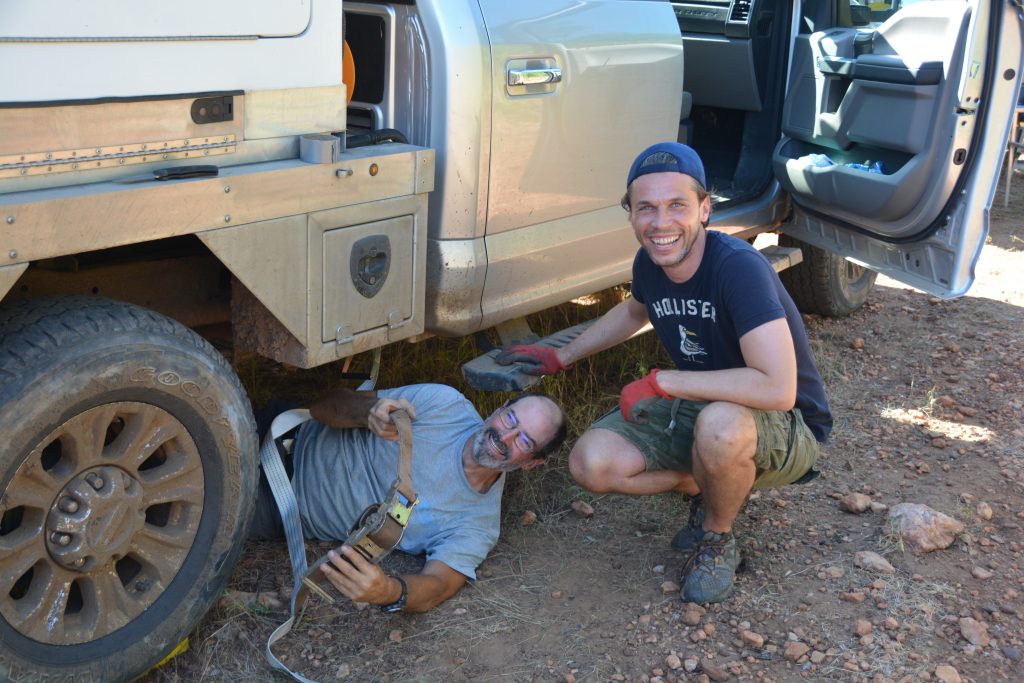
We used Marco’s brain power and my braun to put a new ratchet strap around our broken tray – and it worked!
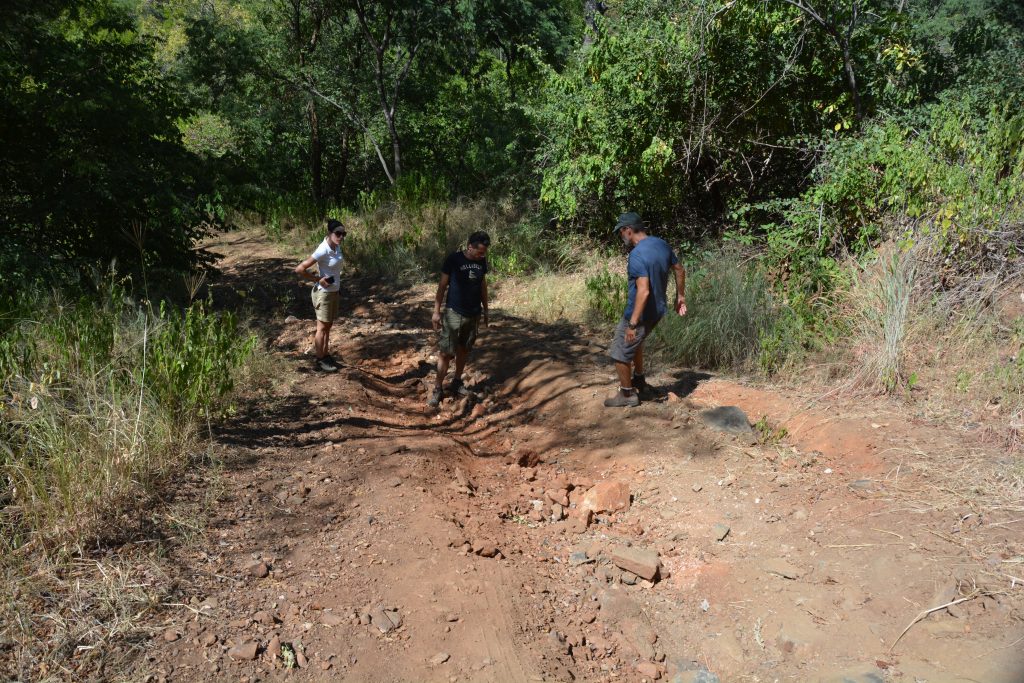
The second day on Leopard HIll involved some very technical driving sections which required forwarding scouting by the team
We camped that night on the banks of the mighty Zambezi River and enjoyed a sunset cruise organised by the camp. We saw elephants, many hippos, crocs and an assortment of birds but the highlight was just to be cruising along the river, enjoying the late afternoon sun across this beautiful passage of water, taking in the whole peaceful scene with our new Austrian friends.
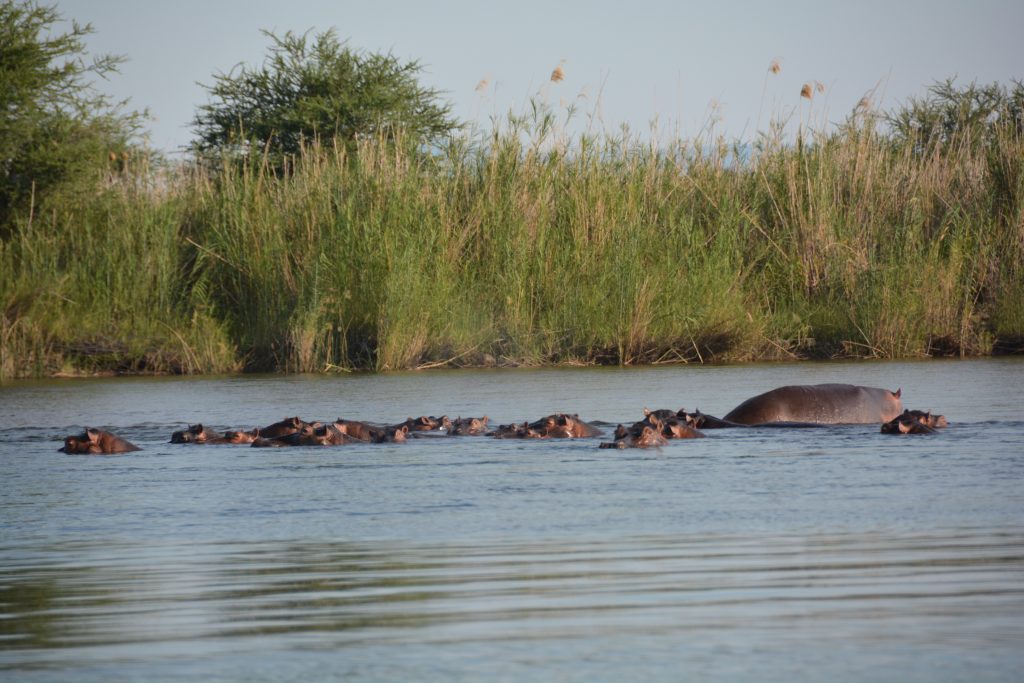
Hippos, when you are near water its always the hippos that amaze us with their size, their danger and their noise
But any trip like this has an unspoken – and unwanted – element that has to be dealt with from time to time. So after reluctantly saying goodbye to Marco and Eve, good travel buddies as they were, we headed northward to the nation’s capital, Lusaka, to deal with a few administration issues. First, we had to buy more US dollars which are needed to pay for visas and many park entrance fees. We had brought a healthy pile of greenbacks with us but after spending most of them in in Mozambique, Malawi and Zambia and talking to people about how the economies of Zimbabwe (a basket case) and Botswana operate we knew we had to buy some more. We also did a massive resupply of the fridge and pantry plus found a garage that managed to fix one of the new and rather annoying new squeaks that Tramp had developed in his front left shock .
We camped that night in a campsite near Lusaka, zebras, giraffes and impalas nearby, and the next morning headed south again towards Livingstone, named after the famous Scottish explorer David Livingstone, and the famous Victoria Falls. Its over 400 kilometres (250 miles) between Lusaka and the country’s second city, Livingstone, and we put in a long driving day to make the distance. The land was mostly covered in Africa scrub with some crops of maize and a few herds of cattle but it dried out as we headed further south and the road thankfully smoothed out so we could cover the distance in a day.
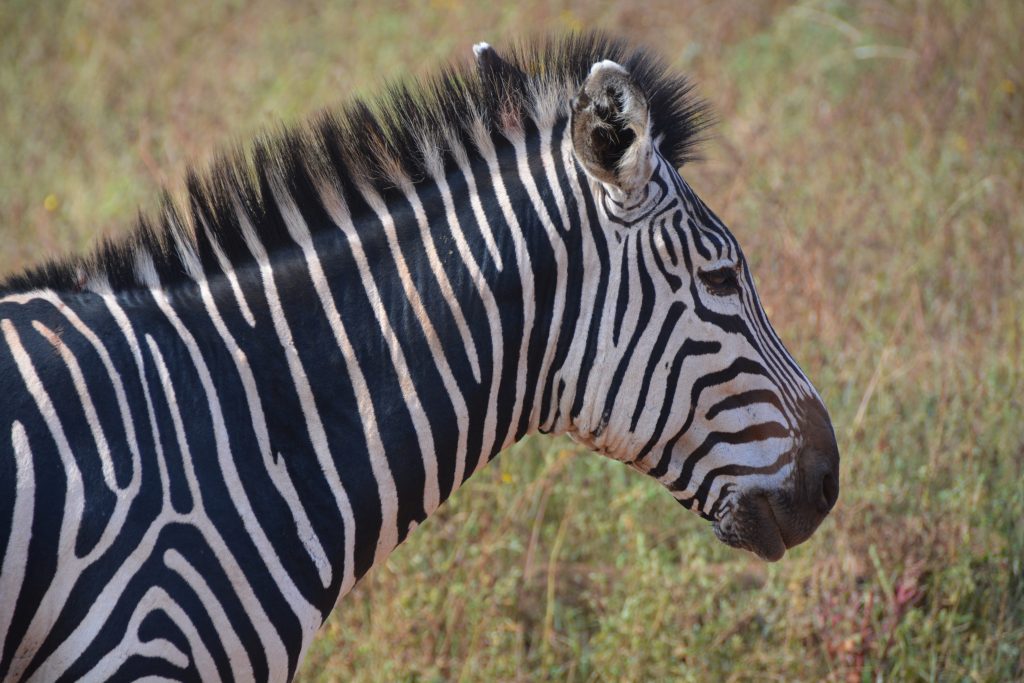
There is something a bit strange about camping on the close outskirts of the nation’s capital and having zebras come into camp
We camped that night on the banks of the Maramba River just a short distance from Victoria Falls. Huge crocs and hippos played in the water and the banks opposite us as we savoured our last night in Zambia. Zambia has been good, very good, full of great wildlife, adventure, beautiful scenery and new friends. We will miss it.
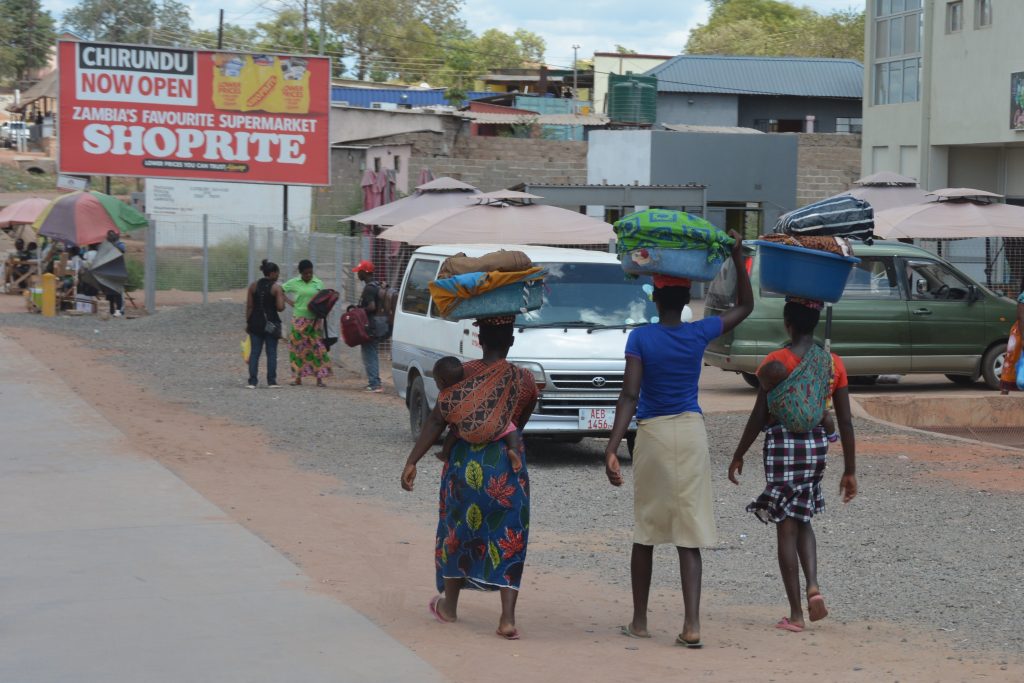
Closer to civilisation the streets are busier but some things never change, like women carrying their goods on their heads, some with babies strapped on their back
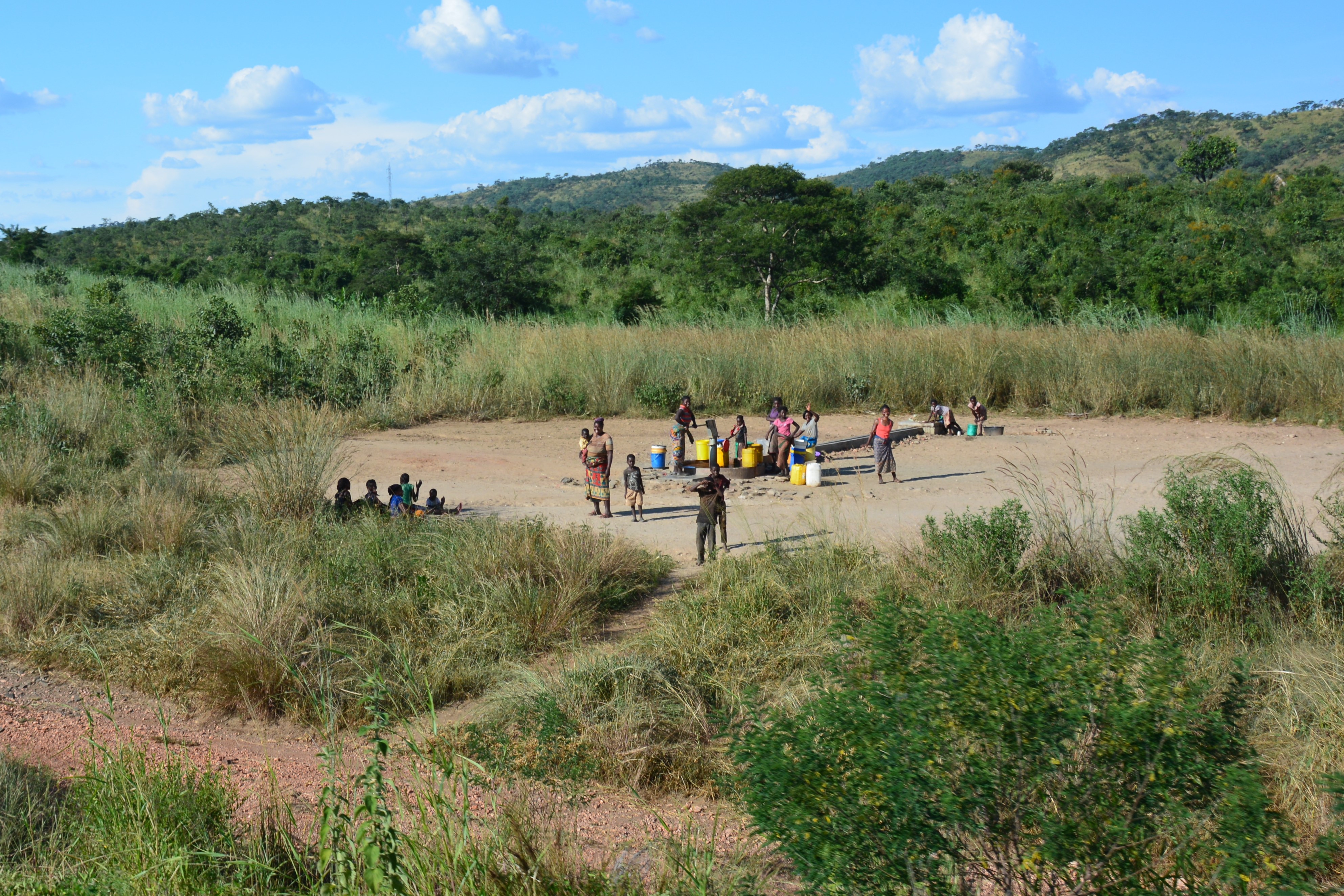
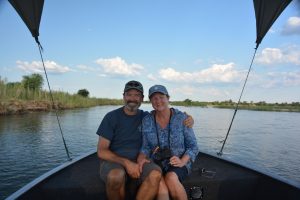














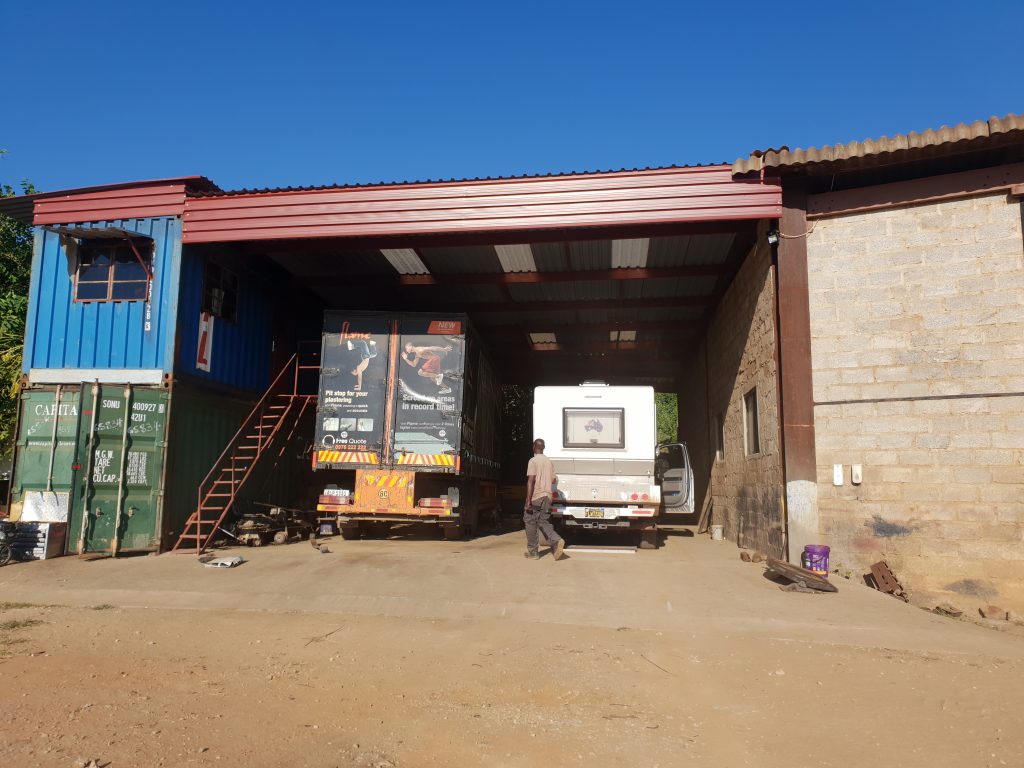


Comments
Zest in Zambia — No Comments
HTML tags allowed in your comment: <a href="" title=""> <abbr title=""> <acronym title=""> <b> <blockquote cite=""> <cite> <code> <del datetime=""> <em> <i> <q cite=""> <s> <strike> <strong>